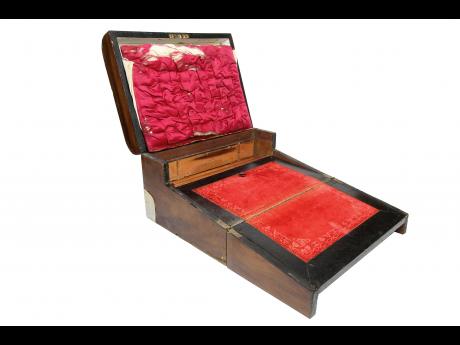Pens and ink and the writing slope
Every day we write emails, respond to text messages and leave comments underneath countless pictures and videos across social media.
We do most of this writing on mobile devices, phones, laptops and tablets. The action of writing is so commonplace in today's society that it is taken for granted. The ability to read and write has not always been so widespread as a large cross section of the population was not literate and had little access to education.
The history of writing is a long one as some of the first examples have been found in the remains of ancient civilisations and cultures such as Mesopotamia and Sumer. Martin says that writing, as it is generally understood, appeared on four continents over three millennia.
According to Denise Schmandt-Besserat, there were three different writing systems that developed independently in the Near East, China and Mesoamerica. Schmandt-Besserat goes on to state that each form of writing has been preserved over millennia and features characteristics of their original prototypes.
Examination of the various writing styles reveal that the first forms of writing were used mainly for accounting via the use of tokens, while concern for the afterlife by the living paved the way to literature by using writing for funerary inscriptions.
Schmandt-Besserat goes on to state that the evolution of writing documented a steady progression in non-representational ideas, from one to one correspondence to the merging of meaning with the representation of phonemes by the letters of the alphabet. This development meant that accompanying technologies were devised to facilitate efficient writing and record keeping.
One very important piece of technology that was developed is the writing slope. Although credited as an invention of 18th century Victorians, writing slopes, which are also referred to as writing tables or boxes, were actually invented much earlier.
According to Diehl and Donnelly, writing slopes were used as early as the early the Middle Ages, in monasteries where monks copied rare books and works of holy instruction and law. Writing slopes became even more popular as time progressed and the majority of the Upper and Merchant classes became literate and the writing slope which doubled as a travelling office had become standard equipment for the well educated.
WRITING SLOPE
The writing slope is essentially a wooden surface which was placed at a slanted angle and was used for writing. They came with lids, hinged at the front, with slanted upwards towards the back, opening to form a writing surface with only one compartment underneath for storage. These storage compartments were made specifically to hold ink, quills or pens and paper. Many of them were also made with a locking mechanism to keep their contents safe and secure from prying eyes.
These boxes were also made from a variety of woods, including mahogany, burl walnut, and rosewood. The use of marquetry, the delicate inlay of patterns of a lighter colour wood such as boxwood, was also common. The more ornate boxes had brass ormolu mounts that were added to protect the corners from damage. The design of writing boxes reflected the changing fashions of the times.
It is important to note that slopes came in various sizes and were used in different circumstances. For example, the slope that is being discussed today was used in domestic and by affluent travellers. The largest of the writing slopes which is called a 'Campaign Box' was used in the military on the field by high-ranking officers and officials to write letters and or sign official documents and was often referred to as a field officers' desk.
Deluxe boxes had velvet or felt interiors while cheaper models had laminated paper interiors. Slopes such as the one pictured were usually decorated to suit the taste of the owner as it was not just a piece of equipment but an accessory that was used to show their wealth and prestige.
Writing boxes seldom have identification or maker's name or branding and only the type of wood and the overall design gave clues to their origin. It was not unusual for a wealthier person to have their name engraved on a brass handle plate. Makers usually fitted writing box interiors with the necessary writer's accessories such as stationery, letters, pen-holders, quills, seals, sealing wax, ink and pounce, all had their separate holders or compartments. Many had a secret drawer.
The utility of an easily portable box to provide storage for writing materials and a surface on which to write eventually led to the continuing usage of a smaller and more compact boxes that became very popular in the late 18th and 19th centuries, because the user could hold it on his or her lap or use it at a table. The invention of the compact lap desk or writing slope can in some ways be considered to be a precursor of the modern-day laptop.
Sources:
Beal, P. (2008). A Dictionary of English Manuscript Terminology: 1450 to 2000. Oxford University Press.
Diehl, D &, Donnelly, M. (1999). Medieval Furniture: Plans and Instructions for
Historical Reproductions. Stackpole Books.
Schmandt-Besserat, D. (2014). The Evolution of Writing. Austin, Texas: University of Texas Press.
- Information compiled by Sharifa Balfour, assistant curator,
National Museum of Jamaica, Institute of Jamaica

